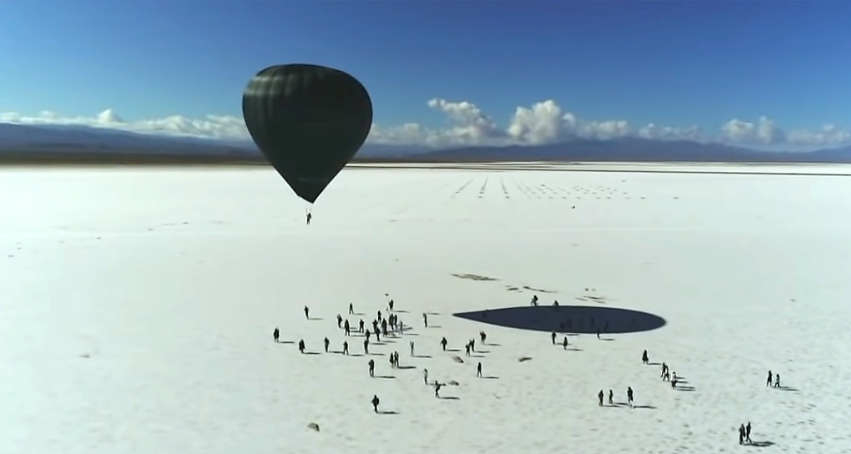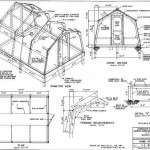
If you picture a flying machine, you probably imagine a craft which is heavier than air, somehow kept aloft with wings or propellers. Heavier-than-air flight dominates discourses about aviation. “Sustainable” crafts are designed to be as light as possible (whilst remaining heavier than air), so that they require less energy from whatever renewable source they use for lift. These machines include human-powered planes such as those using pedals to rotate a propeller. Lighter still are kites and gliders, which remain heavier than air, but rely on air resistance and lighter air around them to fly.
Less discussed are flying machines which are lighter than the air they fly through because the weight of their materials and passengers is counterbalanced by the hot air or light gases they contain. [1] Perhaps this is because most of us experience flight in passenger airliners, not Zeppelins. In theory, making lighter-than-air flight sustainable is simple: heat a container full of air with sunlight so that it rises. In January 2020, Leticia Noemi Marqués flew freely in the Aerocene Pacha solar balloon, the first Fédération Aéronautique Internationale certified fully-solar, untethered, manned flight. Previous flights of this kind went uncertified or relied on propane burners or inflation generators [2]. Aerocene Pacha flies on solar energy not from solar panels or batteries but absorbed directly in the envelope (the fabric of the balloon).
Solar balloons are a subcategory of hot air balloons, which rise because the hot air inside is less dense than the external air. Hot air and helium balloons were developed in 18th century French experiments. In quick succession in 1783, aeronauts achieved a series of firsts for ballooning. In November, the Montgolfier brothers launched the first animal-carrying hot air balloon (containing a duck, rooster and sheep). In September Pilatre de Rozier and Marquis D’Arlandes were the first people to fly untethered in a hot air balloon. This last balloon flew with the risk that the envelope would ignite from the embers which were used to heat the hot air. [1]
The solar balloon invented itself
The solar balloon awaited, latent, within this history. It could be said that the solar balloon invented itself in an accident in 1794, when a hot air balloon in France freed itself from its tethers and rose into the air purely from the heat of the sun. [2] The potential of this phenomena went unnoticed as balloon inventors moved on to design airships powered by the internal combustion engine, like Zeppelins. In the 1960s, Ed Yost refined the hot air balloon with the addition of a propane burner, which the fuel source used most commonly today. The risk of fire continues to haunt recent hot air balloons, prompting alternative designs which do not involve combustion. In the 1990s, Alejandro Uribe adapted the unmanned paper balloons Brazilian communities build for festivals to be fully solar to eliminate the danger of balloon-lit forest fires.
Solar balloons rely on the same principle as combustion hot air balloons, but with sunlight absorbed by the envelope to replace the burner. From 1972, Dominic Michaelis designed and tested a series of manned solar balloons with transparent polyester envelopes and black fabric inside to absorb heat. [2] Julian Nott used one of these to successfully fly across the English Channel in 1981. These flights were assisted by propane burners. Tracy Barnes performed the first fully solar balloon flight in 1973, using a tetrahedral-shaped single skin envelope. [3] It is unclear how the balloon was inflated. Aerocene Pacha is the most recent solar balloon flight to be manned, untethered and, ostensibly, entirely independent from fossil fuels. The team inflated the envelope with fans run on pedal power.
Manned solar balloons
Manned solar balloons combine the technologies of burner-heated balloons and unmanned solar balloons used in scientific research. An example of the latter was the 1977 Montgolfière Infrarouge (MIR), which circulated in the lower stratosphere, flying on sunlight in the day and infrared at night. [2] Infrared is sufficient to maintain altitudes of around 20 kilometres because the air is so thin. [4] Recent examples use simpler technology – the Heliotrope Solar Hot-Air Balloon costs around 30 dollars to make and can be “ram inflated” by holding the bottom open and walking it to and fro until it fills with air.
Researchers have also explored the potential of using tethered solar balloons to generate electricity. One wind-solar system, designed by Robert Grena, is aided by a small pocket of hydrogen and pre-heated by “charging” for a period of time in the sun. [5] When it is released, the balloon unwinds its rope from its windlass, which powers a generator. Wind-power contributes by pulling the balloon, and so the rope, horizontally. Grena proposes systems for deflating the balloon at its peak altitude, so energy is not lost from air or wind resistance as it falls. The simplest of these contraptions consists of rods fixed to the envelope which are held bent by taunt strings for the ascent and straighten when the tension is released for the fall, pulling the envelope shut.
Altitude and Distance
Do Aerocene flights and their ilk herald an age in which we are more likely to fly by solar balloon than passenger plane? Julian Nott proved that international travel via (primarily) solar-powered balloon is possible forty years ago, when he crossed the English Channel. Nott flew from a point northwest of Dover to Tournehem sur la Hem near Calais, making the flight distance over 60km. Aerocene’s official world record for solar-balloon flight distance at 2.55km (measured as the crow flies between lift-off and landing points) is less encouraging. Most solar balloon attempts, especially for scientific purposes, have focused on altitude rather than distance, so there is as yet unexplored potential.
If solar technology could be made as reliable as propane burners, they could carry passengers across the Pacific, which is the hot air balloon distance record of 7671km, set by Per Lindstrand and Richard Branson in 46 hours and 15 minutes in 1991 (far longer flights have combined hot air with other gas technology). [6] This would rival the human powered flight Guinness World Record of 115 km, set by Kanellos Kanellopoulos in 1988. [7] The problem remains that fully solar balloons need sunlight, and it is rare for the sky to remain unclouded for long journeys. Any transport system based on solar balloons would have to be opportunistic, where pilots wait for safe conditions and perhaps break journeys into short stages.
Francis Rogers.
Thanks to Nicolas Maigret.
Sources:
[1] Folkes, J. (2008). Balloons, airships and kites – lighter than air: Past, present and future. The Aeronautical Journal (1968), 112(1133), 421-429. doi:10.1017/S0001924000002384
[2] Aerocene Community, 2021. A brief history of Solar Ballooning and Aerocene. [online] Aerocene.org. Available at: <https://aerocene.org/a-brief-solar-ballooning-and-aerocene/#> [Accessed 11 July 2021].
[3] Brown, D., (1974). Sunstat: A Balloon that Rides on Sunbeams. Ballooning, XI(2), pp.5-9. Available at: <https://www.brisbanehotairballooning.com.au/wp-content/uploads/2015/02/SunstatArticleinBallooning.pdf> [Accessed 11 July 2021].
[4] Bowman, D., Norman, P., Pauken, M., Albert, S., Dexheimer, D., Yang, X., Krishnamoorthy, S., Komjathy, A. and Cutts, J., (2020). Multihour Stratospheric Flights with the Heliotrope Solar Hot-Air Balloon. Journal of Atmospheric and Oceanic Technology, 37(6), pp.1051-1066.
[5] Grena, R., (2013). Solar balloons as mixed solar–wind power systems. Solar Energy, 88, pp.215-226. https://doi.org/10.1016/j.solener.2012.11.021
[6] Åkerstedt, H., n.d. CIA Notable flights and performances: Part 10, 1991-1995. [online] Fédération Aéronautique Internationale. Available at: <https://www.fai.org/sites/default/files/documents/rpt_10_1991-1995.pdf> [Accessed 11 July 2021].
[7] Guinness World Records., (n.d.). Longest human powered flight (distance). Available at: <https://www.guinnessworldrecords.com/world-records/longest-human-powered-flight-%28distance%29> [Accessed 11 July 2021].
[8] Reay, D., (1977). “Man-Powered Rotocraft and the Persistence of the ‘Bird-Men’” In: The History of Man-Powered Flight, pp.249-262. https://doi.org/10.1016/C2013-0-02894-0





